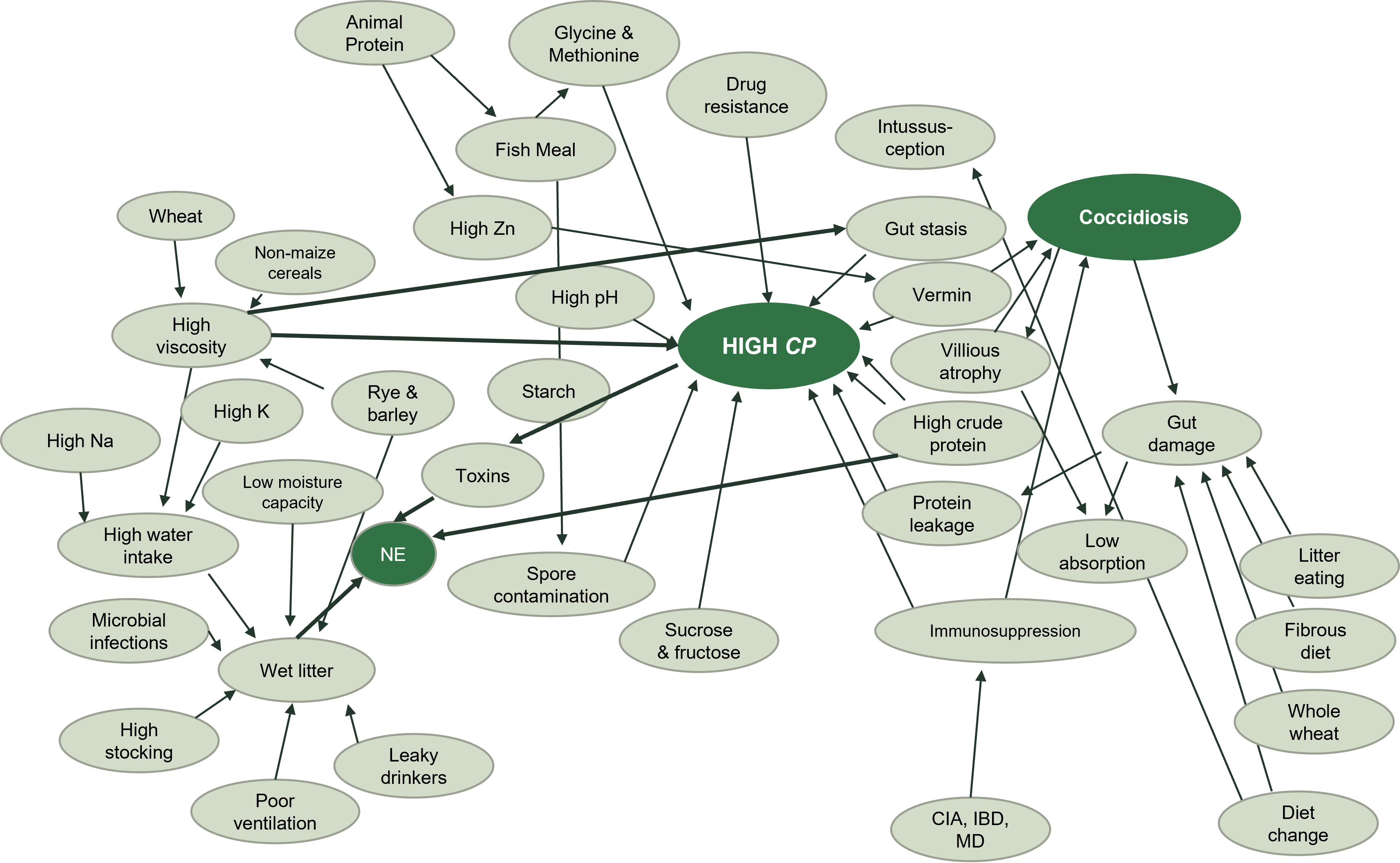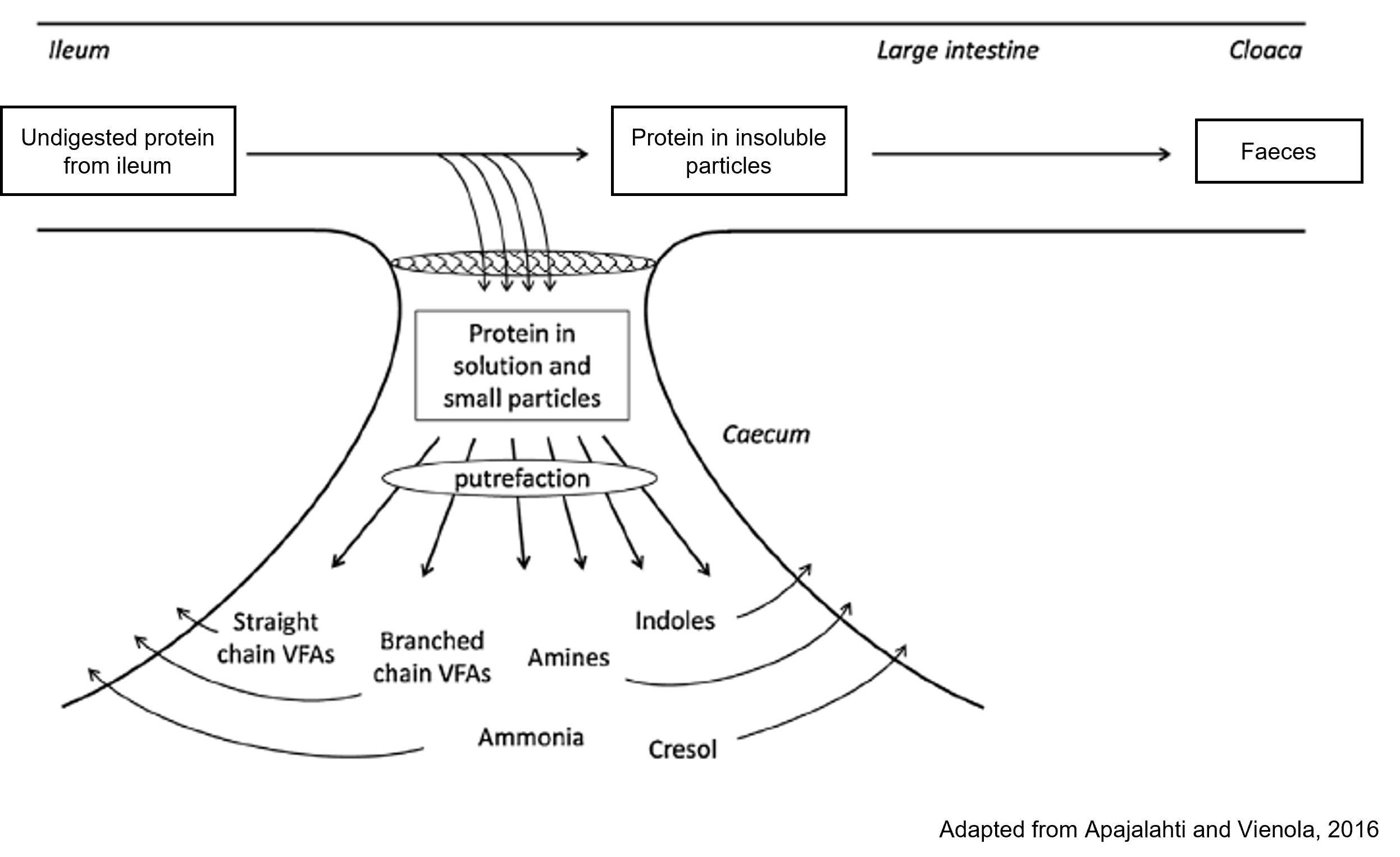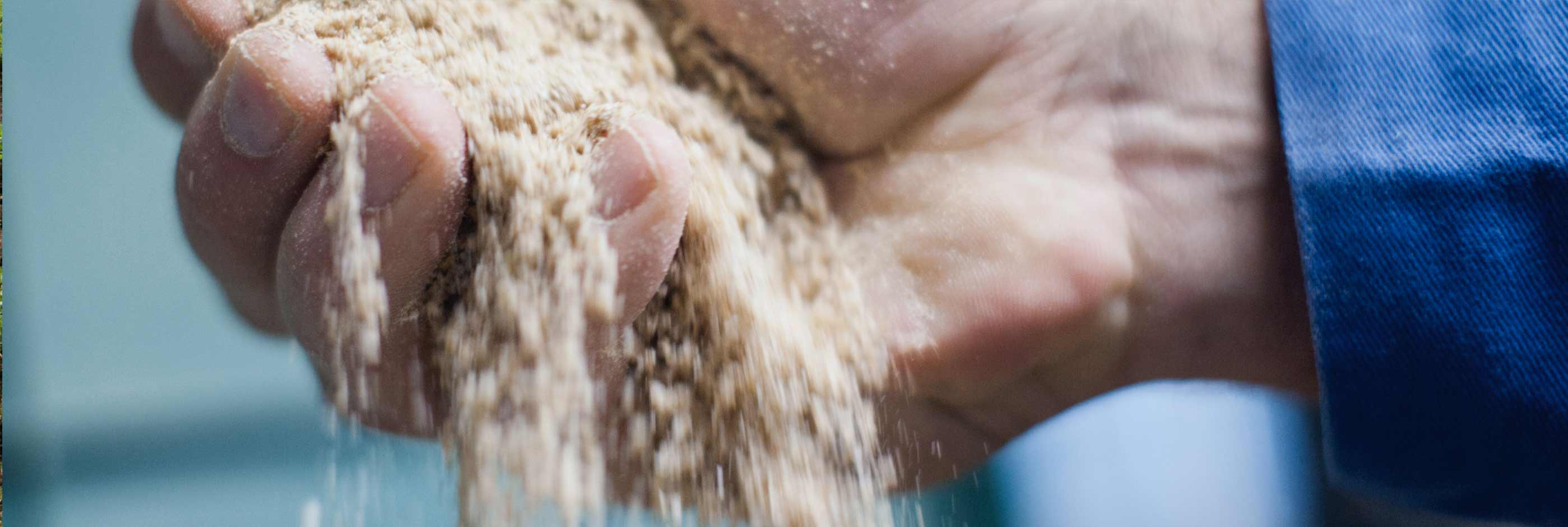Animal protein is a risk to the intestinal health of chickens
By Hamlet Protein
The inclusion of animal proteins in poultry diets has been and is a widespread practice in many regions of the world. The type of animal protein used can vary from market to market, with the predominant animal proteins being terrestrial animal meals and fishmeal (FM).
With respect to terrestrial animal meals, this group includes meat and bone meal (MBM), mainly from ruminant origin, and poultry by-product meal (PBM). The use of MBM and PBM is still prevalent in many American and Asian markets. The original raw materials of these two meals include viscera, bones, blood, hooves, heads and fat. Therefore, they present a considerable variability in their chemical composition. Both sources of terrestrial animal protein provide valuable sources of essential amino acids, calcium, and phosphorus for chicken diets, minimizing the need to incorporate inorganic phosphorus into feed, thus reducing feed cost. However, their Tryptophan content is rather low, and is furthermore not highly available. In addition, overheating during the manufacturing process of these ingredients may reduce the availability of amino acids, particularly Lysine, in addition to oxidizing their lipid fraction. All in all, in these types of animal protein sources, it is important to control moisture, ash content, protein digestibility, fat quality, biogenic amines and ammoniacal nitrogen content, as well as possible bacterial contamination.
The other source of animal protein most widely used in poultry feed is FM, which is obtained from the grinding and drying of whole fish, parts thereof, or waste from the canning industry. The variability in the composition and quality of FM is extremely high, depending on the region of origin and the characteristics of the manufacturing process. It should be said that the inclusion of fishmeal in poultry diets (especially for young birds) is, to a greater or lesser extent, common in all the continents of the world, including Europe, although its prices have skyrocketed in recent times. The main value of FM is its amino acid profile, having an ideal proportion of highly digestible essential amino acids. Another important characteristic of FM is that its protein does not show antigenicity, which is why it is very suitable for (pre-) starter diets. However, the freshness of FM, its processing features and storage conditions affect its stability due to potential bacterial activity or oxidation. Consequently, the content of peroxides, biogenic amines and ammonia, as well as the digestibility of amino acids may be affected.
Despite the drawbacks that the above referred animal protein sources may show due to some instability in their composition and quality, they have been ingredients of choice for feeding young chicks for many years. In principle, they provide considerable amounts of highly digestible amino acids, which helps to meet the high amino acid requirements of young birds.
However, the usefulness of MBM, PBM and FM in diets devoid of AB needs to be examined. Feeding those animal proteins to young chicks may trigger the onset of dysbiosis in general and necrotic enteritis (NE) and may affect the overall health of birds due to the production of toxic substances in the caeca that are absorbed and pass into the bloodstream.
Regarding NE, the most common form of is subclinical. This form is much more economically devastating than the acute form because of an absence of obvious symptoms, resulting in delayed manifestations: slowing of growth from day 20 of life approximately, and increased FCR. The overwhelming effects of subclinical NE can be partly alleviated with the use of antibiotic growth promoters (AGPs). For this reason, the predisposition to suffer from this intestinal disorder when chicks are fed with animal meal becomes evident when AGPs are no longer used. Obviously, there are many feed additives that aim to replace AGPs. However, when the use of AGPs is stopped, we cannot just replace a "foo foo dust" with another "foo foo dust", but we also need to rethink the entire feed formulation to avoid those feed-induced issues such as subclinical NE. In this sense, the inclusion of animal meals in feed for young birds should be quizzed, especially when these diets are not supplemented with antibiotics.
Why are animal meals, such as MBM, PBM and FM, predisposing factors to NE and dysbiosis?
It is possible that a proportion of the protein in those animal proteins is not readily digested in the small intestine of young chicks and pass into the large intestine, as it may contain structural proteins such as keratin, elastin, collagen or fish bone proteins. The presence of undigested proteins in the hindgut may instigate NE, by fueling toxicogenic Clostridium perfringens (CP), the main causative agent of NE in chickens. If your (pre-) starter feed contains animal protein and is not supplemented with antibiotics, you are "feeding" the CP populations in the gut throughout this initial period of life without realizing that the action of this pathogenic bacterium will take place after a few days (around day 20). In other words, the dietary protein fed to chicks during their first days of life may be the spark that ignites the NE fuse later. Graph 1 shows the factors that predispose to NE (adapted from Williams, 2005).
Graph 1. NE predisposing factors in chickens

In addition to the risk of CP proliferation, it is very important to consider that Ileal bypass undigested protein is subjected to fermentation by putrefactive bacteria in the caeca. Putrefaction generates volatile fatty acids, which are not known to be toxic. However, it also generates numerous harmful and toxic compounds such as amines, indoles, phenols, cresol and ammonia, which are absorbed, pass into blood and can all negatively affect host cells’ and vital organs’ health and functionality. Thus, the mentioned damaging protein fermentation products, in high concentrations, may have adverse effects on chicken growth and performance. Graph 2 shows the resulting products from protein putrefaction in the caeca..
Graph 2. Protein putrefaction products in caeca

It is the responsibility of poultry nutritionists to minimize the passage of undigested protein to the ceca as much as possible, especially when it comes to young chicks, which do not yet have the full capacity to digest all the dietary protein. Our experience at Hamlet Protein has taught us that the best option in case of not adding any AGPs to starter diets is not to include MBM, PBM or FM in the feed, but to use clean and highly digestible vegetal protein sources. However, not all vegetal proteins are most appropriate for young bird diets. Do you want to continue assessing what options you have? Get in touch with our experts!

